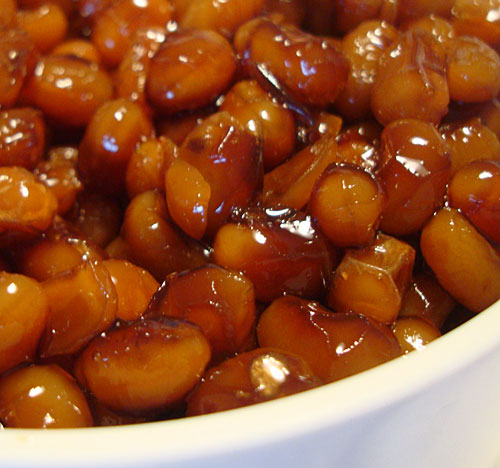
There are many recipes for stewed or simmered beans in Japanese cooking, but this is one of the simplest, and I'm fairly sure, one of the oldest recipes in existence. It traditionally only uses three ingredients -- soy beans, sugar and soy sauce -- but I've added a little salt too since I like the saltiness to be a bit more assertive to balance the sweetness. The beans have a unique, chewy texture that is unlike any other bean dish I've ever had. The soy beans become almost caramelized, yet are not cloyingly sweet.
The name budo mame means 'grape beans'. I'm not totally sure what it means, but it probably means that the beans take on a shiny appearance rather like grapes. They do indeed look like black grapes when made with black soy beans (kuromame), but here I've made them with regular white or light brown soy beans, which are a lot easier to get for most people.
Just a spoonful or so tucked into the corner of your bento box makes a nice change of pace, even a mini-dessert of sorts. And of course, it's packed with protein.